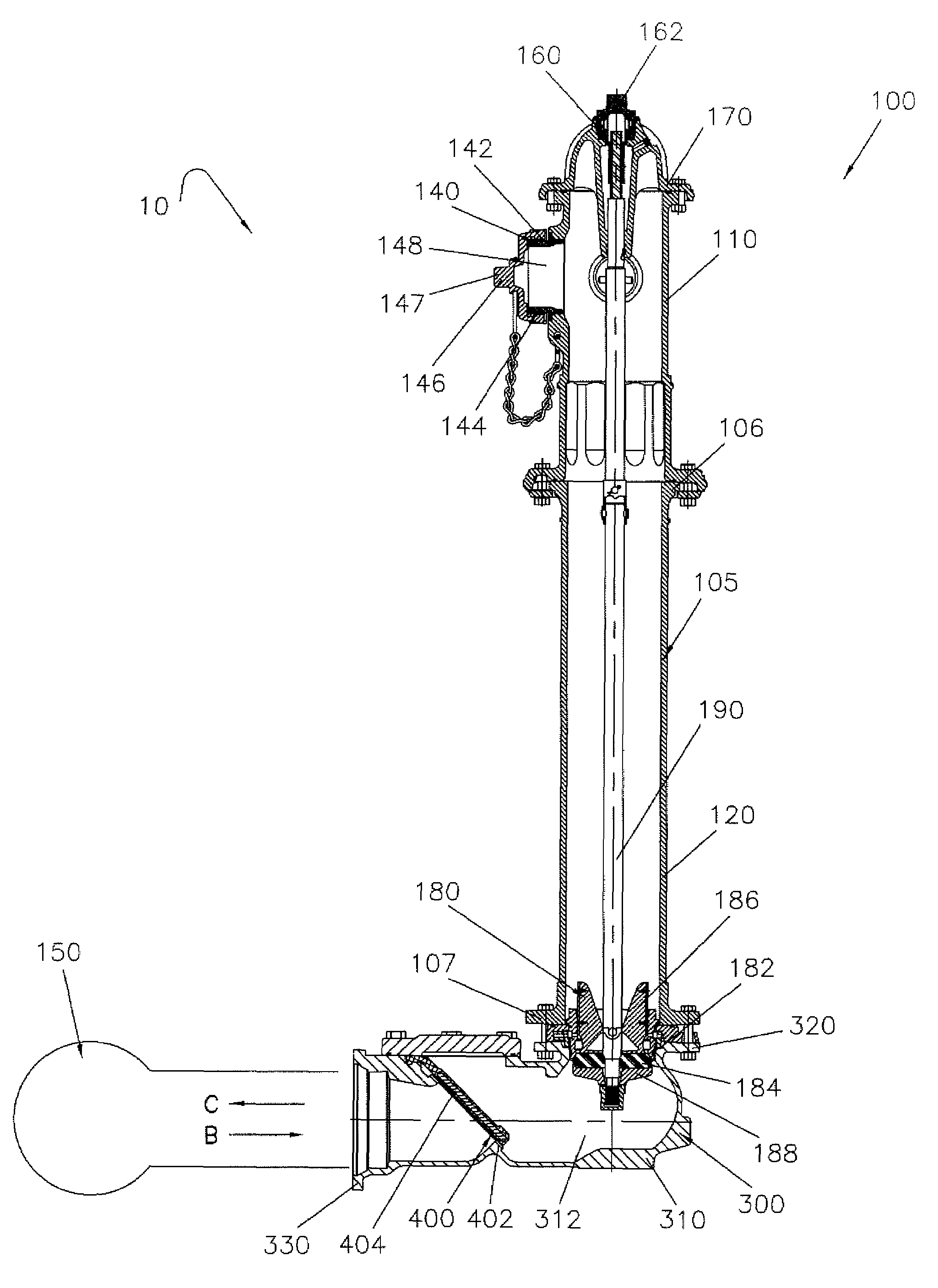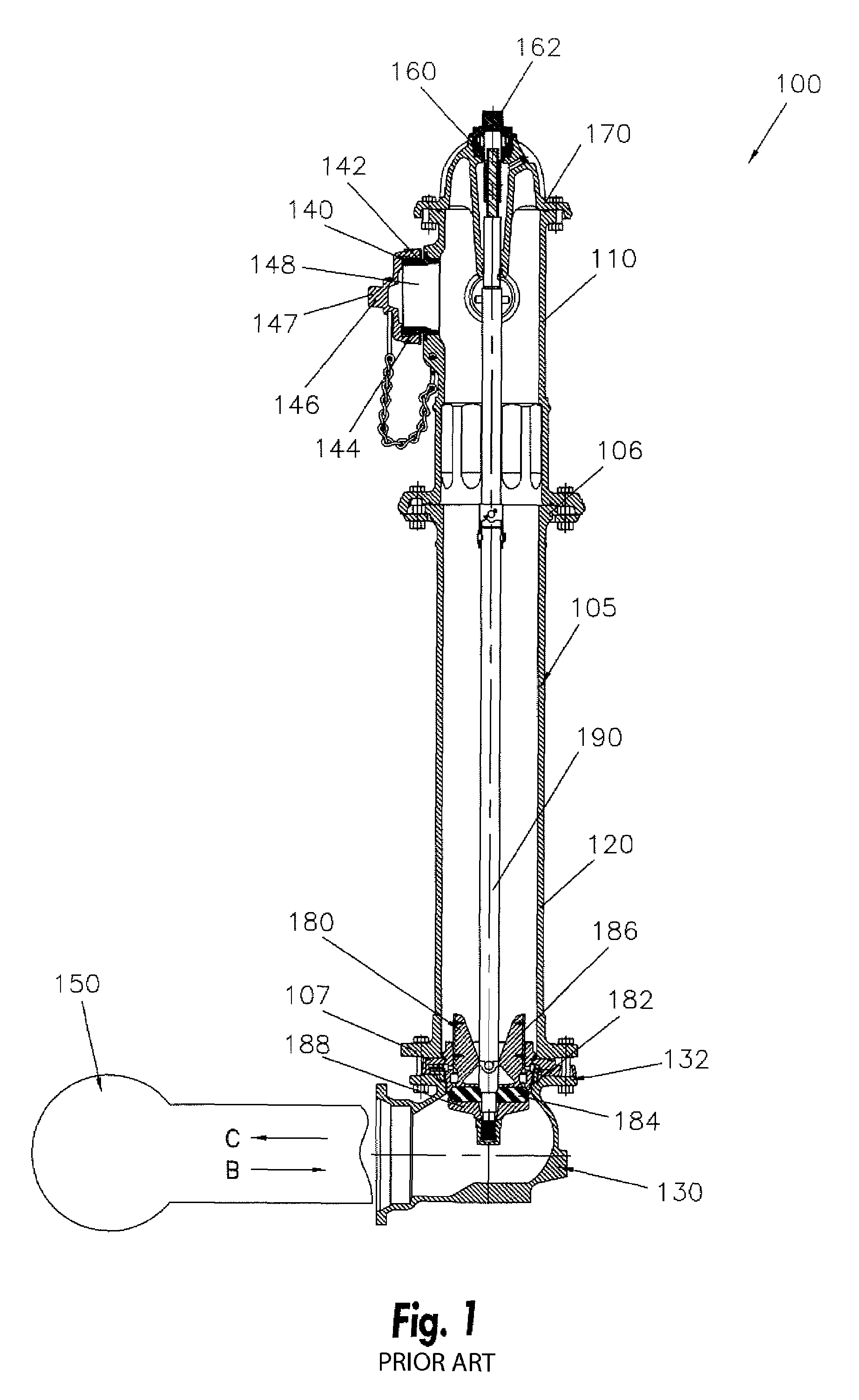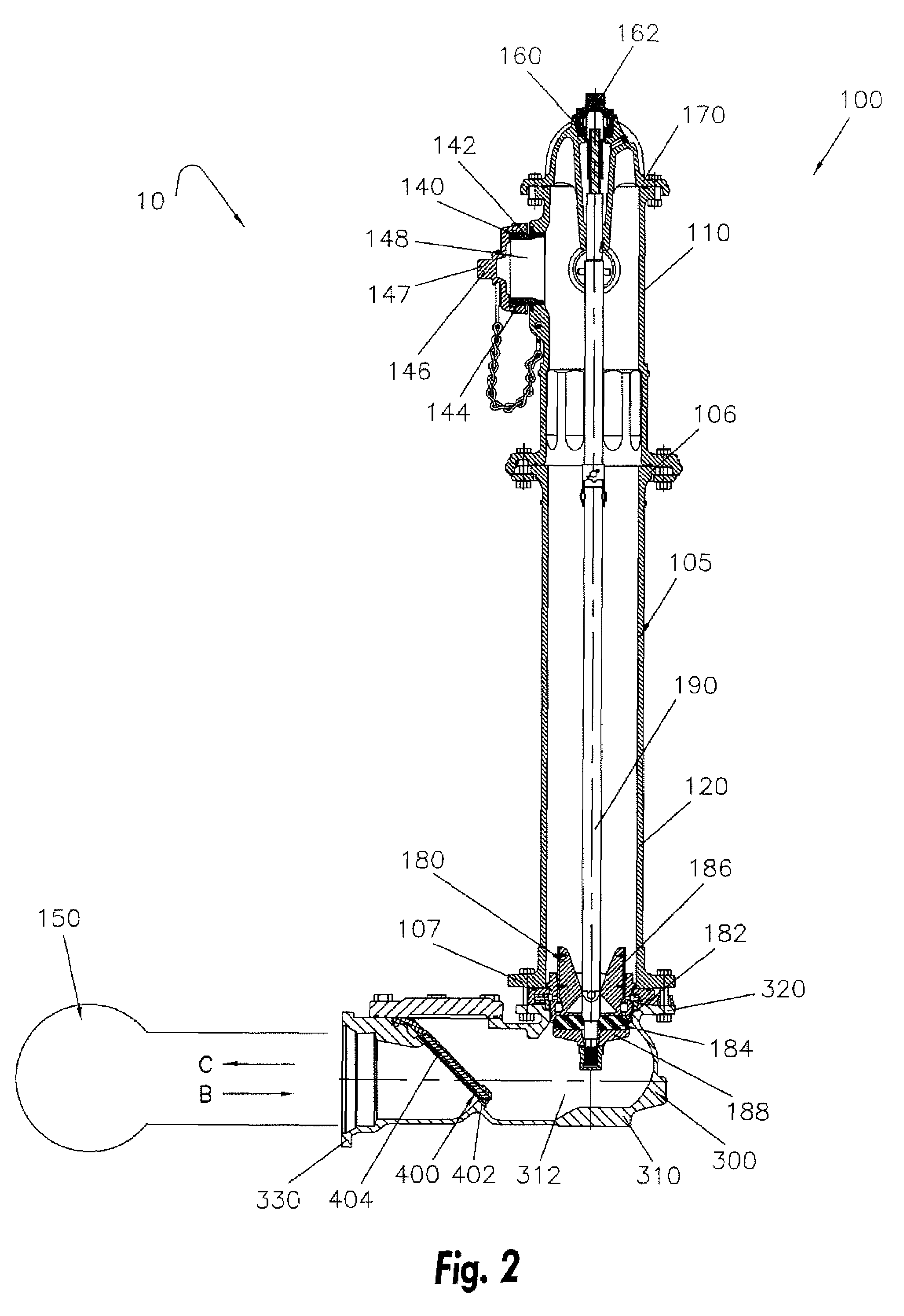Hydrant shoe with backflow prevention assembly
a backflow prevention and fire hydrant technology, applied in the field of fire hydrant security, can solve the problems of increasing the risk of fire damage, unauthorized use or contamination of fire hydrants, and public water safety, and achieve the effect of controlling communication
- Summary
- Abstract
- Description
- Claims
- Application Information
AI Technical Summary
Benefits of technology
Problems solved by technology
Method used
Image
Examples
Embodiment Construction
[0033]To facilitate an understanding of the principles and features of the invention, it is explained hereinafter with reference to its implementation in an illustrative embodiment. In particular, the invention is described in the context of being a backflow prevention assembly for a fire hydrant, preferably a dry-barrel fire hydrant.
[0034]Referring now in detail to the drawing figures, wherein like reference numerals represent like parts throughout the several views, a hydrant shoe having a backflow prevention assembly is in fluid communication with a conventional fire hydrant.
[0035]FIG. 2 illustrates a cross-sectional view of a fire hydrant that is connected to a hydrant shoe. FIG. 3 illustrates a side view of the hydrant shoe. FIG. 4 illustrates a top view of the hydrant shoe, while FIGS. 5-6 illustrate side, cross-sectional views of the hydrant shoe across the line A-A of FIG. 4.
[0036]More specifically, FIG. 2 illustrates a fire hydrant system 10, which includes generally simila...
PUM
 Login to View More
Login to View More Abstract
Description
Claims
Application Information
 Login to View More
Login to View More - R&D Engineer
- R&D Manager
- IP Professional
- Industry Leading Data Capabilities
- Powerful AI technology
- Patent DNA Extraction
Browse by: Latest US Patents, China's latest patents, Technical Efficacy Thesaurus, Application Domain, Technology Topic, Popular Technical Reports.
© 2024 PatSnap. All rights reserved.Legal|Privacy policy|Modern Slavery Act Transparency Statement|Sitemap|About US| Contact US: help@patsnap.com










